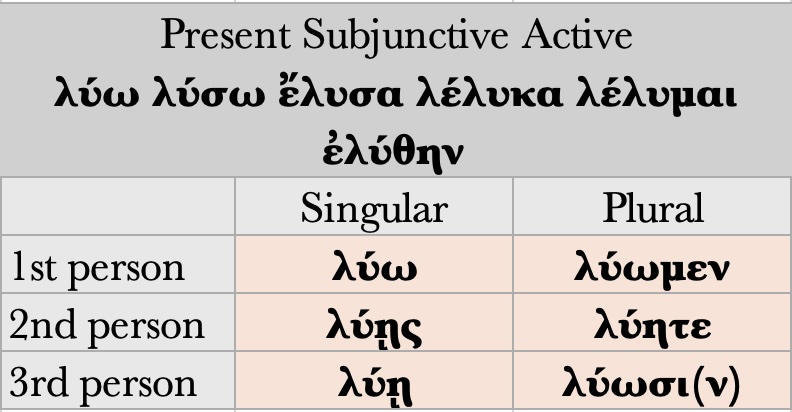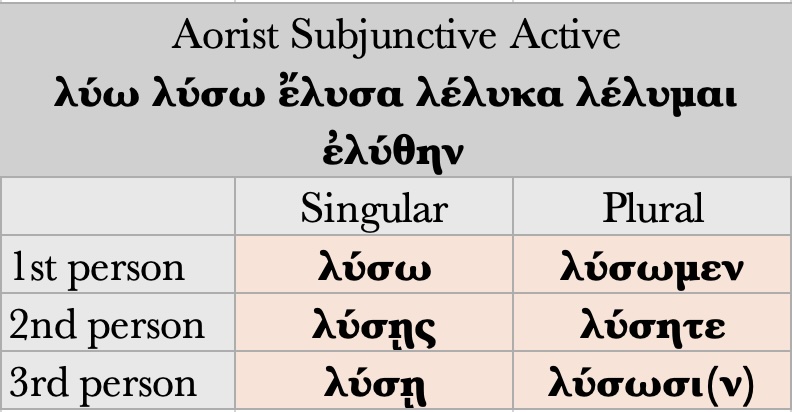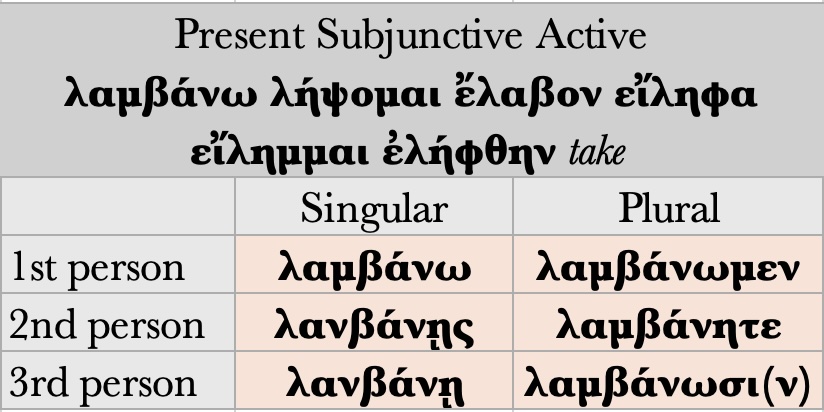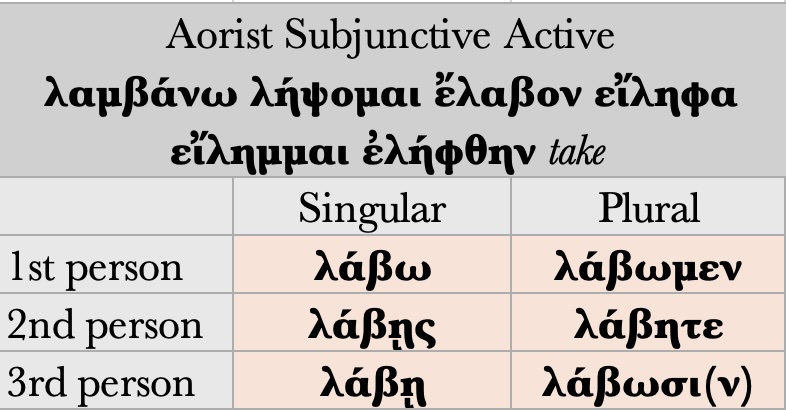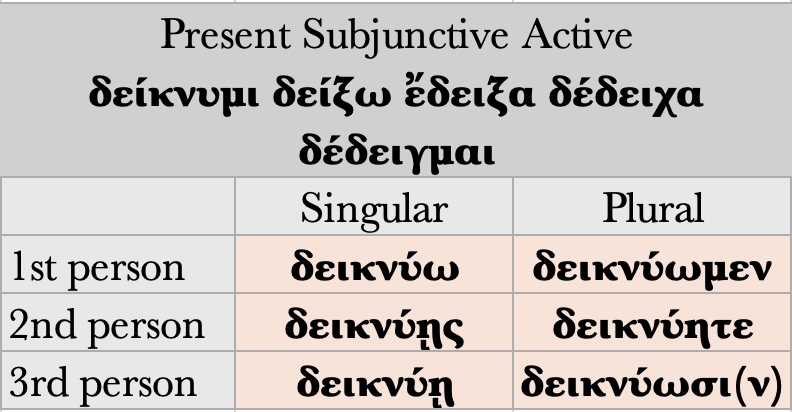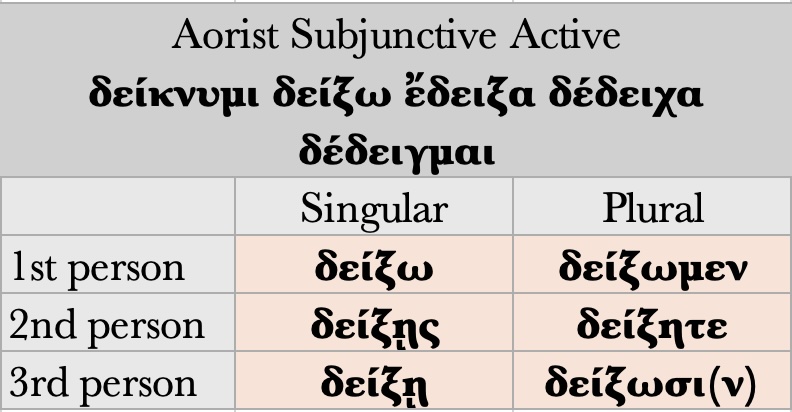46.7 All three tenses of the subjunctive use the same set of THEMATIC endings. The tense of the subjunctive is indicated not by any additional markers or endings, but only by the TENSE STEM. As discussed above, the tenses of the subjunctive reflect ASPECT, not time. As a result, it may be no surprise to learn that the PRESENT and AORIST are the most common tenses of the subjunctive that you will encounter. The PERFECT subjunctive, on the other hand, rarely appears in Greek. This tense is discussed separately below.
To see how to form the subjunctive in the PRESENT and AORIST tenses, let’s take a look at these examples:
- λύω, λύσω, ἔλυσα, λέλυκα, λέλυμαι, ἐλύθην
- λαμβάνω, λήψομαι, ἔλαβον, εἴληφα, εἴλημμαι, ἐλήφθην
- δείκνυμι, δείξω, ἔδειξα, δέδειχα, δέδειγμαι, ἐδείχθην
Let’s begin with this verb: λύω, λύσω, ἔλυσα, λέλυκα, λέλυμαι, ἐλύθην
- present tense stem: λυ–
- aorist tense stem: λυσ–
- Note that for subjunctives, the α of the –σα ending is dropped from the first aorist stem.
46.12 Now let’s take a look at this verb, in the active voice: λαμβάνω, λήψομαι, ἔλαβον, εἴληφα, εἴλημμαι, ἐλήφθην
- present tense stem: λαμβαν–
- aorist tense stem: λαβ–
46.14 Finally, let’s take a look at this verb, in the active voice: δείκνυμι, δείξω, ἔδειξα, δέδειχα, δέδειγμαι, ἐδείχθην
- present tense stem: δεικνυ–
- aorist tense stem: δειξ–
(cf. G 360)
